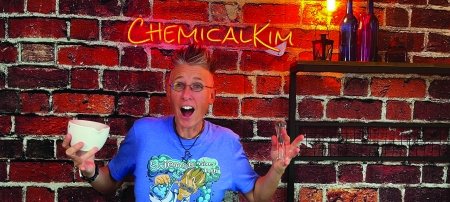Michigan Tech researchers have developed a singlet oxygen model to calculate how particular chemicals break down in surface water.
In addition to providing vitamin D, helping flowers grow and creating the perfect excuse to head to the beach, sunlight also helps break down chemicals in streams, lakes and rivers.
What is Singlet Oxygen?
- Singlet oxygen is a dissolved oxygen at an excited state with high kinetic energy that causes it to be quite reactive with organic compounds.
- This reactivity makes singlet oxygen responsible for photodegradation — how materials are altered by exposure to light. For example, ink will fade in sunlight and plastic becomes brittle and thin.
- Singlet oxygen can be used as a disinfectant against viruses and bacteria at water treatment plants.
- The term singlet oxygen refers to the total number of electron spins. Singlet oxygen is also known as dioxidene.
While swimming pools use blue tiles to mimic the color of the Caribbean, most surface water is yellow or brown. For example, Tahquamenon Falls, a popular Upper Peninsula destination, is known for the caramel color of its chutes. That color comes from leaf and bark debris that make tannins — polyphenols, or naturally occurring organic compounds in plants. It’s this debris that absorbs sunlight and creates the singlet oxygen that degrades contaminants.
This reactive species of oxygen causes what’s called photochemical transformation, a process in which light and oxidizing materials produce chemical reactions. But how long does it take for a particular chemical to break down under this sunny and vegetative onslaught?
Understanding how many hours or days it takes a particular contaminant to break down halfway helps environmental engineers and scientists protect our waterways. Knowing a particular chemical’s half-life helps resource managers estimate whether or not that chemical is building up in the environment.
Daisuke Minakata, associate professor of civil, environmental and geospatial engineering at Michigan Technological University, developed a comprehensive reactive activity model that shows how singlet oxygen’s reaction mechanisms perform against a diverse group of contaminants and computes their half-life in a natural aquatic environment.
“We tested 100 different organic, structurally diverse compounds,” Minakata said. “If we know the reactivity between singlet oxygen and contaminants, we can say how long it will take to degrade one specific structure of a contaminant down to half the concentration.”
Minakata’s collaborators are graduate students Benjamin Barrios, Benjamin Mohrhardt and Paul Doskey, professor in the College of Forest Resources and Environmental Science. Their research is published in the journal Environmental Science and Technology.
A Superior Mind
The researchers used the Superior supercomputer, housed in the Great Lakes Research Center, to calculate chemical reactivity energies.
Sunshine Oxidizes and Degrades Toxic Chemicals
The rate of indirect-sunlight-initiated chemical oxidation is unique to the body of water; each lake, river or stream has its own distinct mix of organic matter. And because the process does not occur in the dark, the amount of sunlight a water body receives also affects reactions. For example, singlet oxygen plays a partial role in degrading the toxins in harmful algal blooms and in breaking down the excess nitrogen and phosphorus produced by agricultural runoff.
The reactive oxygen species also has benefits beyond our favorite lakes and rivers.
“Singlet oxygen can be used for disinfection of pathogens,” Minakata said. “It can oxidize chemicals in drinking water or wastewater treatments. There are many ways to use this strong chemical oxidant for many purposes in our lives.”
Moving Beyond Reactions Toward Byproducts
With the half-life calculations established by Minakata’s model, the research team plans to further study the byproducts produced by singlet oxygen/chemical reactions — with an eye toward predicting whether the byproducts themselves will be toxic. By understanding the stages of degradation, Minakata and his team can develop an expanded model to predict the formation of sun-worn byproducts and how the interactions start again.
Grants and Funding
National Science Foundation award CHE-1808052
Ultimately, a full understanding of the half-lives of the many chemicals that infiltrate our water sources is a step toward ensuring clean water for human use.

Michigan Technological University is an R1 public research university founded in 1885 in Houghton, and is home to nearly 7,500 students from more than 60 countries around the world. Consistently ranked among the best universities in the country for return on investment, Michigan's flagship technological university offers more than 120 undergraduate and graduate degree programs in science and technology, engineering, computing, forestry, business, health professions, humanities, mathematics, social sciences, and the arts. The rural campus is situated just miles from Lake Superior in Michigan's Upper Peninsula, offering year-round opportunities for outdoor adventure.






Comments